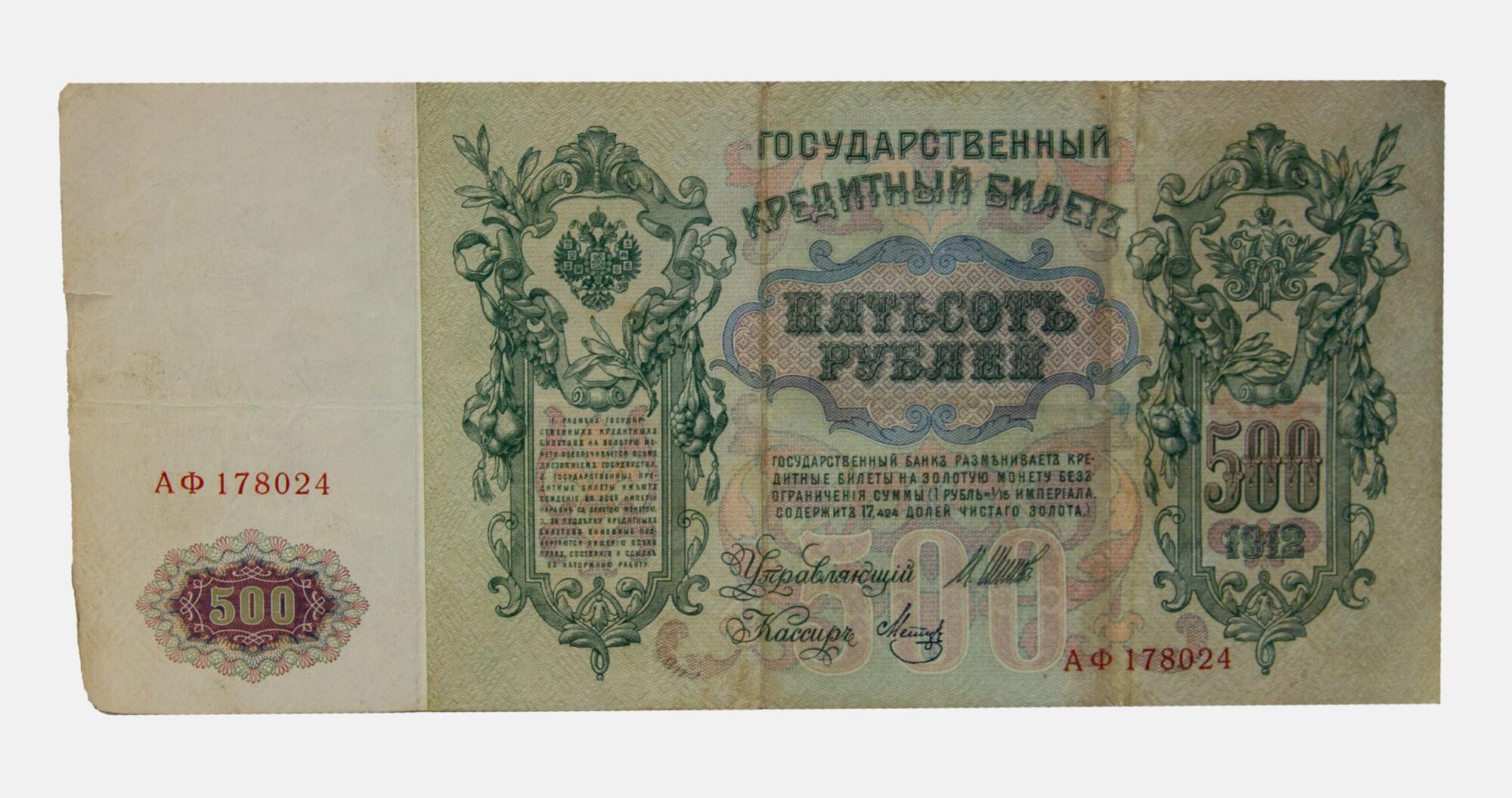In the Russian Empire, new banknotes with a value of 100 and 500 rubles were issued in 1910 and 1912 respectively. They were also known as “Romanovskiye” or “Nikolaevskiye”. They were created by the Expedition of Storing State Papers and turned out to be a real masterpiece, and their artistic perfection has not faded to this day. The highest skill of the artists and engravers who worked on the bills protected them from forgery. Even the most masterful counterfeit could not accurately reproduce the individual manner of the artists who painted the portraits of Catherine II and Peter I featured on banknotes.
Banknotes of this type were put into circulation at the end of 1913 beside the 1898 model banknotes and remained a legal means of payment until September 8, 1922. New bills feature a new depiction of Peter the Great — “Peter in a hat” is replaced by “Peter in armor”. The image of the emperor was used as a watermark. The margin of the bill featured a watermark with the bill’s value.
The obverse of the 1883 model has a state emblem at the top. To the right in the center was the inscription “State credit note” and the face value in words “Five hundred rubles”, and below — a guarantee of gold collateral. Each banknote had its own six-digit number with a two-letter index. An excerpt from the law of November 14, 1897 was also featured on this side: “1. The exchange of State credit bills for a gold coin is ensured by all the property of the State. 2. State credit notes are circulated throughout the empire on a par with the gold coin. 3. For forgery of credit notes, the perpetrators are deprived of all rights of the state and sent to hard labor.”
The obverse of the 1912 banknote was printed using a multicolored backing grid. The reverse was printed in monochrome using the metallographic method without a backing grid. The nature of the design can be described as a mix between Art Nouveau and Russian style, which manifested itself in a fondness for heavy architectural details, signs of monarchical power. The model for the image on the banknote was the engraving “Peter I” by Jacobus Houbraken, a Dutch painter and graphic artist. The engraving itself was made from the work of the Dutch portrait painter Carel de Moore. He painted a portrait of Peter in the Hague in March 1717, where the last tsar of All Russia and the first Emperor of All Russia traveled from Paris for treatment.



